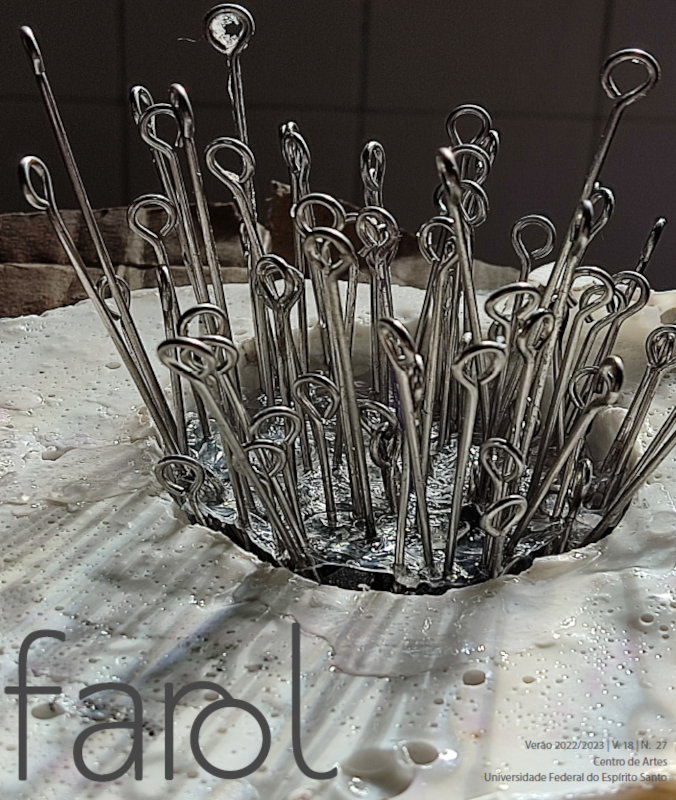Intelligent agents artistic projects
characters that evolve between language and fiction
DOI:
https://doi.org/10.47456/rf.v18i27.42486Keywords:
Inteligência artificial, ficção, chatter-bots artísticos, linguagem, arte computacionalAbstract
This article is the result of simultaneously theoretical and practical research into the use of artificial intelligence technologies in the field of art. The concept of intelligent agent, considered fundamental in computing, is analyzed based on Minsky's theory, according to which intelligence results from the sum of agents, who act and interact with one or more common objectives. For a so ware to be considered an intelligent agent, it must contain one or more of the following elements: a predefined knowledge base, an inference mechanism that allows it to perform more or less complex reasoning, a knowledge acquisition system or a learning mechanism. In the context of this study, our focus is on chatter-bots, whose specificity is to maintain a conversation with the public using natural language. Designed for artistic purposes, these agents can take on various visual forms. Animated by software and capable of providing coherent responses, they are formalized as interactive works due to their ability to dialogue. Two works were selected as objects of study: Agent Ruby by Lynn Hershmann, and Sowana, a project by the art collective Cercle Ramo Nash (Paul Devutour and Yoon Ja). Chatter-bots considered from an artistic perspective allow us to re-discuss certain characteristics of their poetic nature. Intelligent agents conceived as works of art raise a series of questions about artistic fictions, about the exchange between human intelligence and machine intelligence, or even about the possibilities of creating machines dedicated to poetic experience.
Downloads
References
LIPIANSKY, Edmond Marc. Identité & Communication, Éd. PUF, Paris, 1992.
MENOUD, Lorenzo. Qu’est-ce qu’un personnage de fiction?, disponível em http://serialpoet.eu/pdf/personnage.pdf. Acesso em 05 de ago. de 2021.
MINSKY, Marvin. The Society of Mind. New York, Simon & Schuster Paperbacks, 1988.
RYAN, Marie-Laure. Fiction, cognition et médias non verbaux. In: GUELTON Bernard (org.). Les arts visuels, le web et la fiction. Éd. Publications de la Sorbonne, Paris, 2009.
TURING, Alan. Computing Machinery and Intelligence. Mind, vol. LIX, Issue 236, october 1950.
SAINT-GELAIS, Richard. Fictions transfuges. Éd. Seuil, Paris, 2012.
SCHAEFFER, Jean-Marie. Pourquoi la fiction?. Éd. Seuil, Paris, 1999.
Downloads
Published
How to Cite
Issue
Section
License
The authors of works submitted to Revista Farol authorize their publication in physical and electronic media, solely for academic purposes, and may be reproduced as long as the source is cited. They attest to their originality, authorship and originality.





